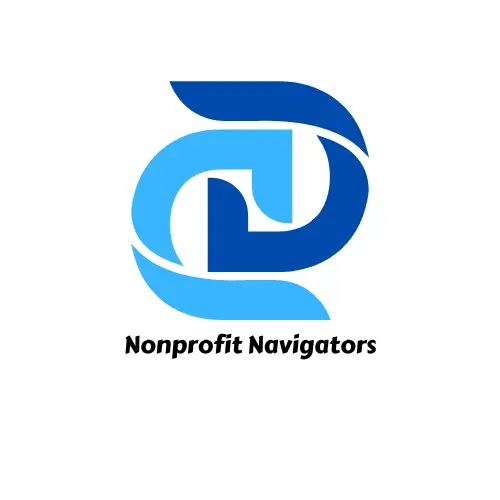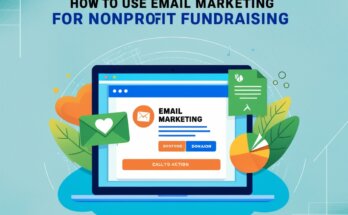Nonprofit Board Fundraising is an essential component of non-profit organizations. Nonprofit Organizations deal with many issues, but a major one is the insufficiency in resources, and therefore, to be able to effectively accomplish its mission and vision, a nonprofit requires a steady inflow of funds.
Most of focus tends to be on employees and volunteers, but there is one particular group that is key to fundraising for the organization: the nonprofit board.
The role of a board member is not a mere title, but an active role in the quest for sustainability. Nonprofit board fundraising tasks are as vital as any other ones and the knowledge as to how a board member’s efforts can help a financial cause may increase the impact of a nonprofit’s fundraising campaigns.
Board members play a decisive role in determining what direction investments into a nonprofit will take. After reading this article, you will understand what tools you can use to motivate your board and how to put it to practice in the interests of the nonprofit organization.
- Setting the Fundraising Strategy
One of the most crucial responsibilities of a nonprofit board is setting the overall fundraising strategy. This involves ensuring that your nonprofit has a clear and actionable plan for raising money that aligns with the organization’s mission, vision, and goals.
Without a well-thought-out strategy, fundraising efforts can become disjointed, and money will not be raised in a sustainable way.
For example, if your nonprofit’s mission is to provide education to underserved communities, the board needs to consider which fundraising approaches align best with this mission.
Should the focus be on corporate sponsorships, individual donations, or government grants? The board should work with the development team to assess all possible funding sources and craft a strategy that leverages the nonprofit’s unique position.
Practical Tip: Every nonprofit should have an annual fundraising plan developed by the board. This plan should outline the objectives, target donors, and specific fundraising events or campaigns that will be pursued. For example, a board could decide that the nonprofit will focus on a major fundraising gala in the spring and a smaller donor drive during the fall.
- Making Personal Contributions
One of the board’s most important roles is leading by example. Board members should make personal contributions to the organization’s fundraising efforts.
It’s essential that they demonstrate their commitment to the cause by giving financially to the nonprofit. This isn’t about the size of the donation, but about showing strong commitment and inspiring others to follow suit.
In many cases, donors expect to see board members contributing before they commit their own donations. Fundraising potential can be significantly increased when board members contribute themselves, whether through donations, pledges, or matching gifts.
Practical Tip: Encourage board members to contribute at a level that feels personally meaningful to them. Whether it’s $50 or $500, their participation matters.
In fact, creating a giving challenge where board members commit to matching donations up to a certain amount can provide a significant boost during fundraising campaigns.
- Leveraging Personal Networks
Nonprofit board members often bring with them a network of connections that can be invaluable in securing funding. From family and friends to business associates and community leaders, these networks can provide leads, introductions, and even direct financial support.
Board members can help by reaching out to potential donors within their networks. This could include hosting informal gatherings or even introducing key people to the development team.
Imagine a board member who works in a corporate setting being able to connect your nonprofit with a corporate sponsor willing to provide a sizable donation.
Practical Tip: Board members should create a network map, listing people in their networks who might be interested in supporting the nonprofit. The map should include details like their relationship to the board member, their capacity for donation, and any personal interests that might align with the nonprofit’s work.
- Fundraising Events and Campaigns
Another key responsibility of the nonprofit board is helping with fundraising events. Whether it’s hosting a charity auction, a gala, or a local community event, board members play an active role in planning, promoting, and executing fundraising initiatives. Their involvement ensures that these events have the visibility and influence needed to succeed.
Think about a silent auction organized by the board. Not only do board members solicit items and sponsors for the event, but they also attend and actively participate, ensuring the event gets the attention it deserves. This participation helps create a culture of giving and engagement within the community.
Practical Tip: Each board member should take responsibility for at least one element of the event. Whether it’s reaching out to potential sponsors, soliciting auction items, or handling logistics, dividing the responsibility helps ensure the event is a success.
- Ensuring Accountability and Transparency
Effective fundraising is built on trust. Board members are responsible for ensuring that the organization is accountable and transparent in its fundraising efforts. This means adhering to ethical standards and ensuring that donor funds are used appropriately.
When donors give money to a nonprofit, they want to know their funds will be used wisely. Board members are in charge of overseeing financial accountability, ensuring that donations are used for the intended purpose and that the organization operates efficiently.
Practical Tip: Hold regular board meetings to discuss how funds are being allocated. Having financial reports readily available and regularly updated will keep the board in the loop and show donors that their contributions are being handled with integrity.
- Engagement in Major Donor Cultivation
Major gifts are often critical to a nonprofit’s financial sustainability. Board members can help by playing an active role in major donor cultivation. This involves identifying potential high-value donors and engaging them in the nonprofit’s work.
Board members should make personal connections with major donors, invite them to special events, and ensure they feel appreciated. These efforts can transform casual donors into long-term supporters who provide sustained funding.
Imagine a board member named Sarah, who works in a high-ranking position at a tech company. She has a colleague, Tom, who has shown interest in supporting local causes.
Sarah introduces Tom to the nonprofit and invites him to an event where he can see firsthand how the organization impacts the community. Tom, moved by the work being done, decides to make a significant donation that helps the nonprofit expand its programs. This is a perfect example of how board members can leverage their personal relationships to secure major gifts.
Practical Tip: Encourage board members to schedule one-on-one meetings with potential major donors. This personal touch often makes the difference in turning a one-time gift into a long-term commitment.
- Advocacy and Public Relations
As part of their role, board members should also act as advocates for the nonprofit, using their influence to speak on behalf of the organization. Advocacy can take many forms, from speaking at events to writing letters of support or simply sharing the nonprofit’s message on social media.
Board members can also help amplify the nonprofit’s message, using their positions within the community to raise awareness about the organization’s work. Advocacy is a powerful tool to not only secure funding but also to expand the nonprofit’s reach.
Practical Tip: Board members should be encouraged to participate in media interviews, write guest blog posts, and attend public forums where they can advocate for the nonprofit. This helps raise the nonprofit’s profile and attract new donors.
- Evaluating and Improving Fundraising Efforts
It is essential that the board regularly evaluates the effectiveness of its fundraising strategies. This ensures that the nonprofit is using the most successful methods and is staying on track to meet its fundraising goals.
If a specific fundraising event or campaign didn’t meet its target, the board should analyze what went wrong and make necessary adjustments for next time. This process of evaluation and improvement is vital for the long-term success of any nonprofit’s fundraising efforts.
Practical Tip: After every major event or fundraising campaign, the board should meet to review what worked and what didn’t. Collect feedback from donors and staff members, and be open to making changes in the strategy for future events.
Your Next Step in Board Fundraising
Take a moment and think about your nonprofit’s board. What steps can your board members take right now to improve fundraising? Below are a few questions to consider:
- Have board members made personal contributions to the organization’s fundraising efforts?
- How engaged is your board in identifying and reaching out to potential donors?
- Does your board have a fundraising strategy in place?
If your answers indicate areas for improvement, consider how you can encourage more active participation from your board. Simple steps like providing clear expectations, creating a fundraising calendar, and involving board members in donor relations can make a huge difference.
Let’s Make It Happen!
Fundraising is a team effort, and when your nonprofit board takes an active role, it can transform the organization’s ability to meet its financial goals.
Want more expert tips and access to fundraising resources? Subscribe to the Nonprofit Navigators Newsletter for ongoing support, grant opportunities, exclusive webinars, and events. Join our community of nonprofit leaders working together to drive positive change.




